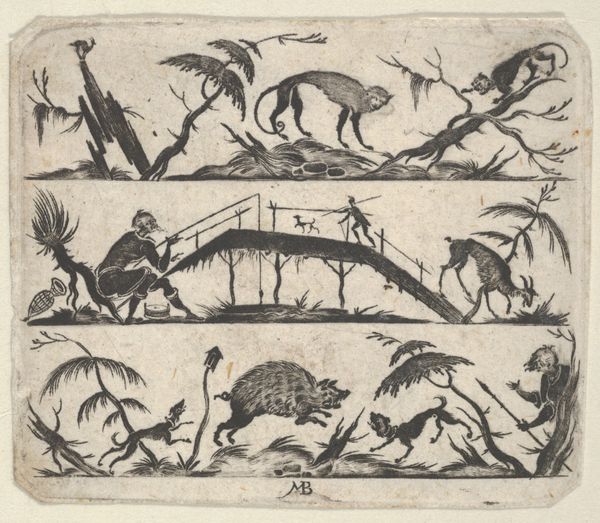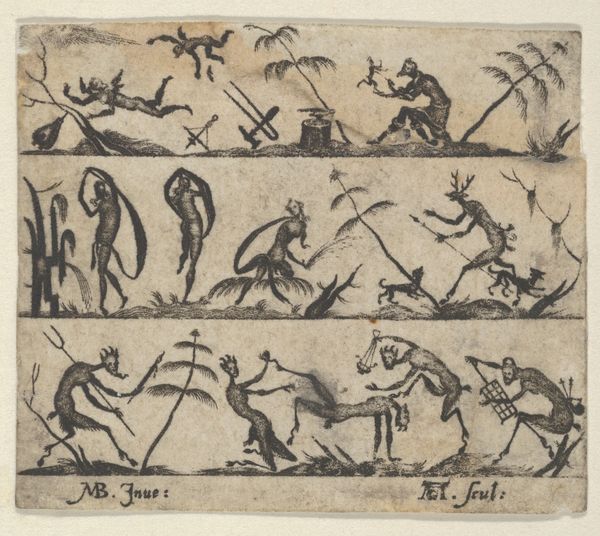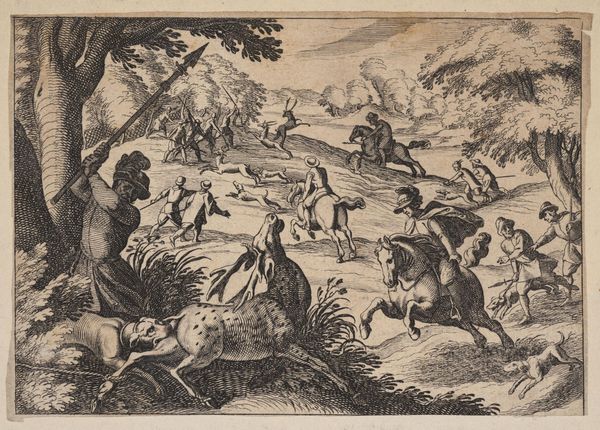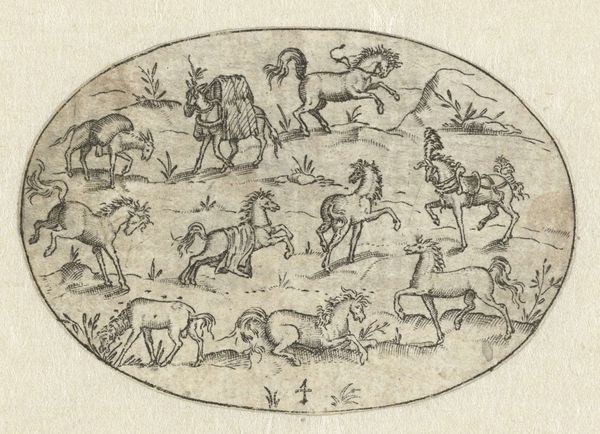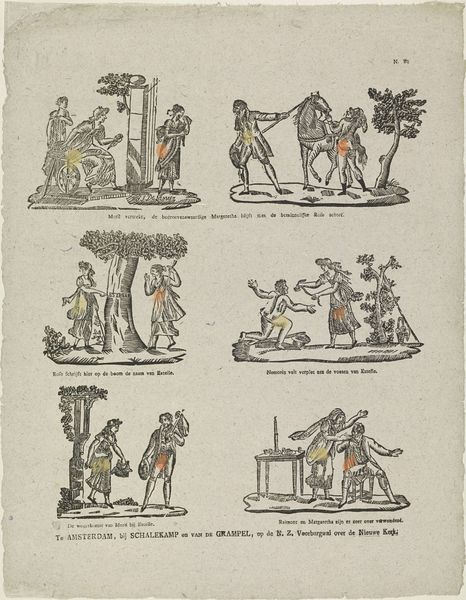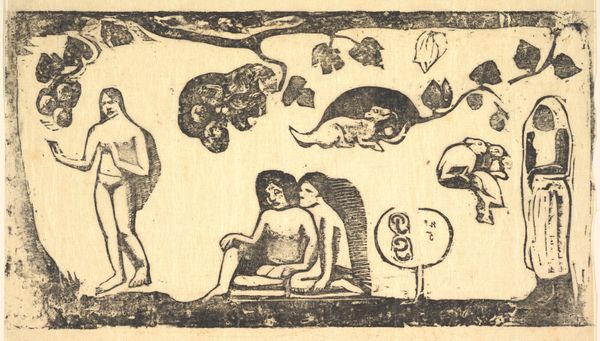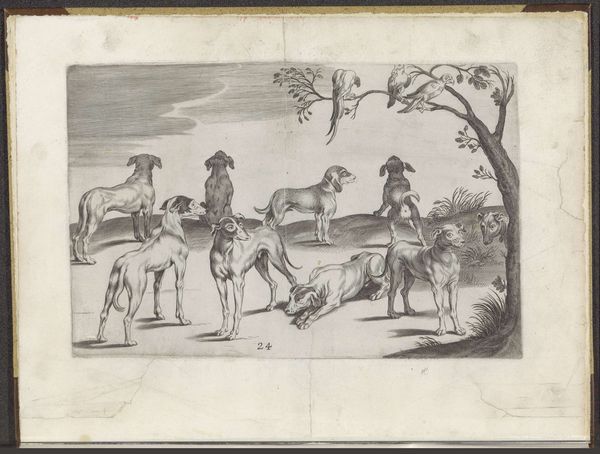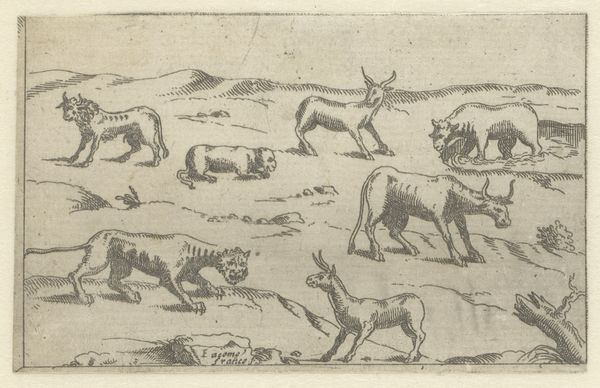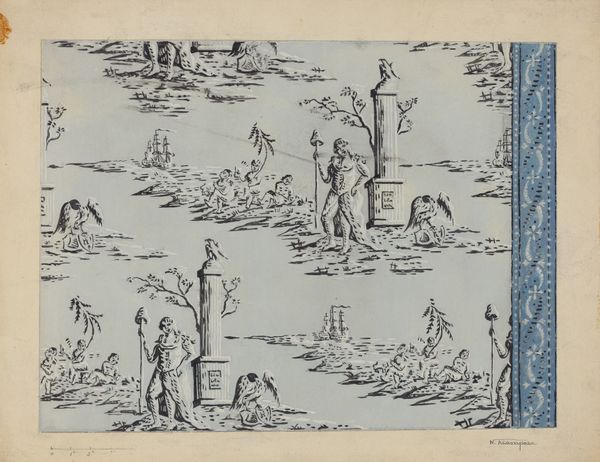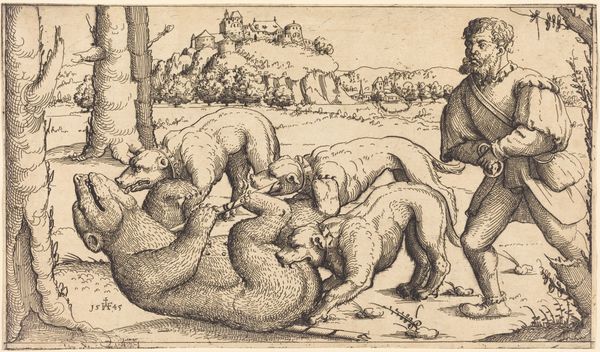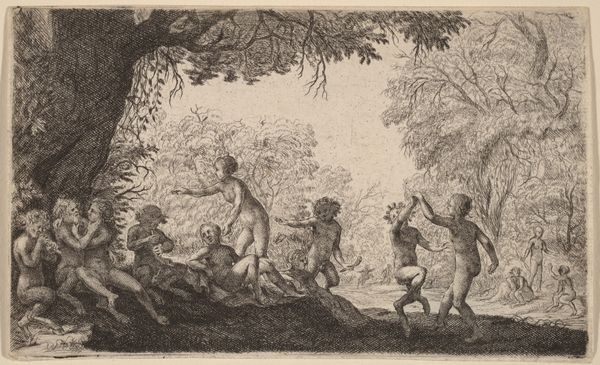
Blackwork Design for Goldsmithwork with a Bee-Keeper, a Farmer and a Boar 1612
0:00
0:00
drawing, print, ink, pen, engraving
#
drawing
#
baroque
# print
#
pen sketch
#
dog
#
landscape
#
figuration
#
ink
#
horse
#
pen
#
genre-painting
#
engraving
Dimensions: Sheet: 1 7/8 × 2 1/4 in. (4.7 × 5.7 cm)
Copyright: Public Domain
Curator: Let’s take a closer look at “Blackwork Design for Goldsmithwork with a Bee-Keeper, a Farmer and a Boar,” an engraving made with pen and ink, dating back to 1612 by Mathais Beitler. It resides here at the Metropolitan Museum of Art. Editor: It's stark. The monochrome palette lends itself to an almost eerie feeling, even with the quotidian scenes depicted. The composition, divided into three horizontal registers, feels very deliberate, a narrative told in segmented panels. Curator: It’s fascinating to consider the social commentary embedded within this print. Beitler showcases scenes of rural life: beekeeping, farming, hunting. But the sharp contrasts in the rendering style seem to suggest an inherent friction within the social fabric of the time. Are we witnessing the idealized pastoral or the exploitation inherent to labor? Editor: The labor! Look at the figures—the farmer straining behind the plow, the beekeeper precariously reaching for the hive. Beitler really highlights the physical exertion required for survival. I’m wondering about the goldsmithwork it was designed for. Was it intended as adornment celebrating the fruits of labor for the wealthy? Curator: Precisely! It brings up interesting questions of patronage and audience. Who commissioned this piece? What meaning did it hold for them? The visual elements—the boar representing wildness, the dogs as symbols of domestication—all speak to power dynamics inherent in human's relationship to the land. Consider the politics of the hunt— who is afforded the right to hunt, to exert dominion over nature? Editor: And what about the materials themselves? The very act of etching with pen and ink is so intimate, yet this artwork served a reproductive purpose; multiples could be created to apply these images to gold. What statement about the social and labor hierarchy of 17th century Europe does it imply, making precious adornments showing the difficult process of food cultivation? Curator: I'm intrigued by your interpretation! Perhaps Beitler sought to make visible the invisible labor supporting societal structures, embedding subtle social critique in the heart of luxury items. Editor: I'm glad we explored that intersection. It is a surprisingly multifaceted piece considering its diminutive scale and unassuming monochrome nature. Curator: Indeed, a poignant commentary on social hierarchy cleverly veiled within a decorative design.
Comments
No comments
Be the first to comment and join the conversation on the ultimate creative platform.
